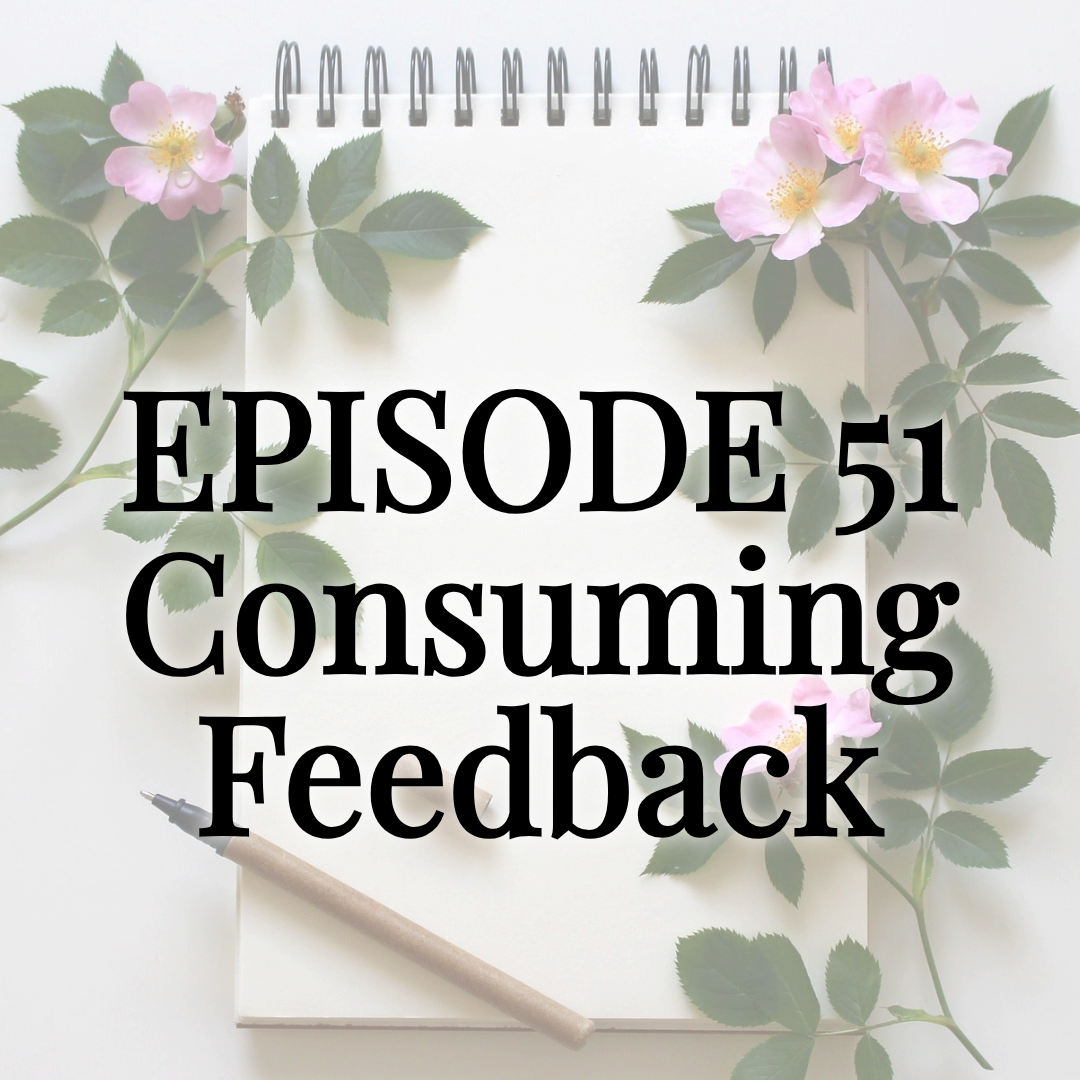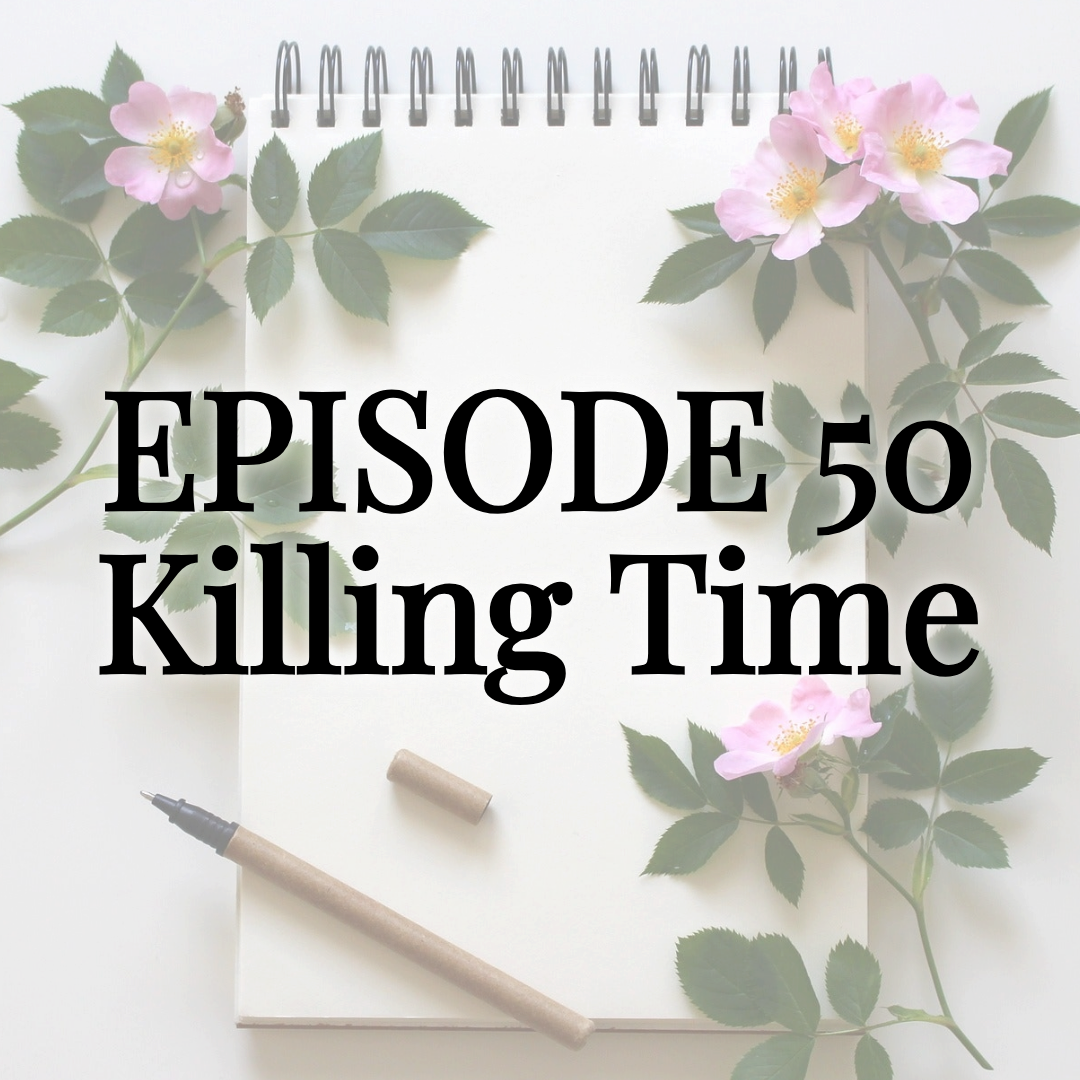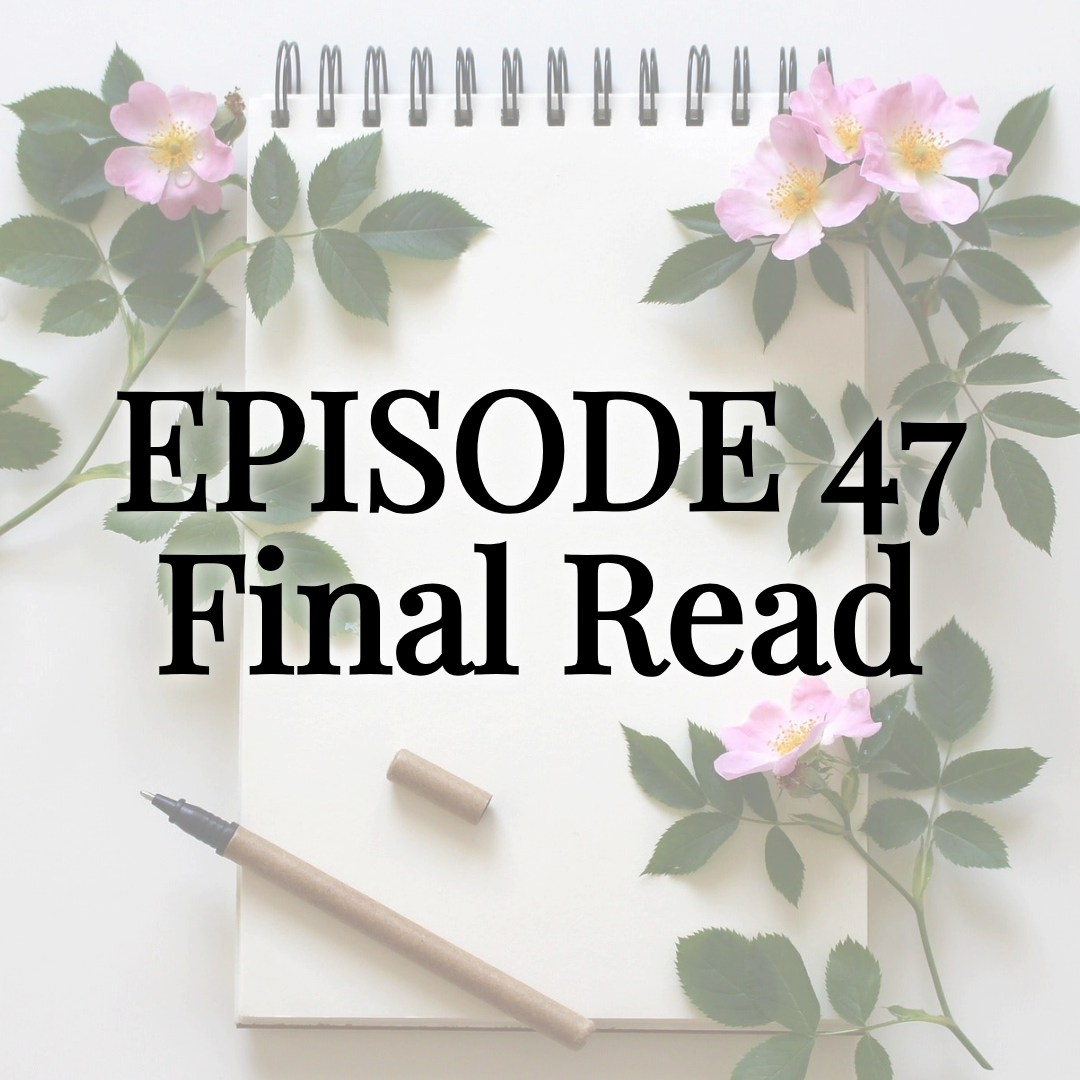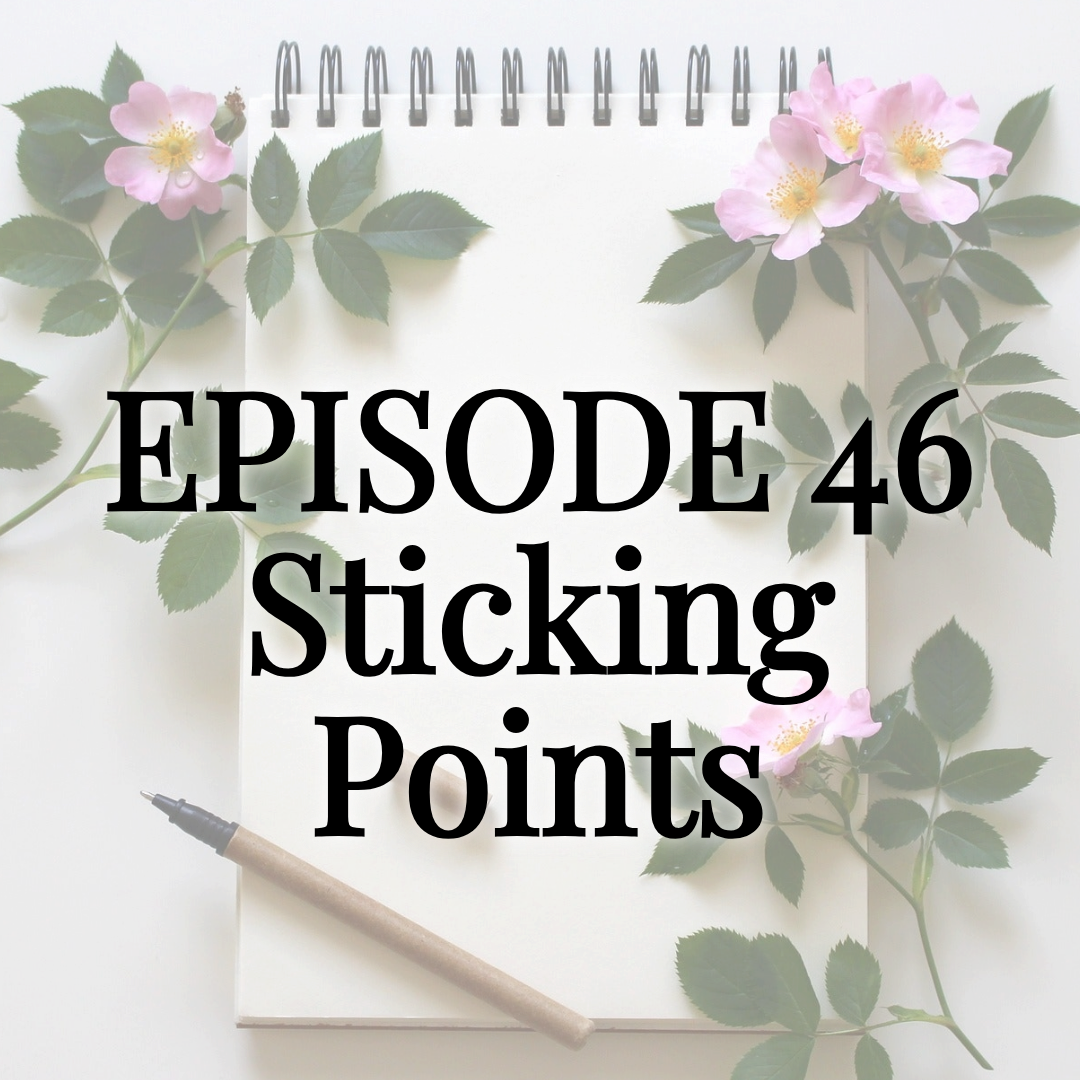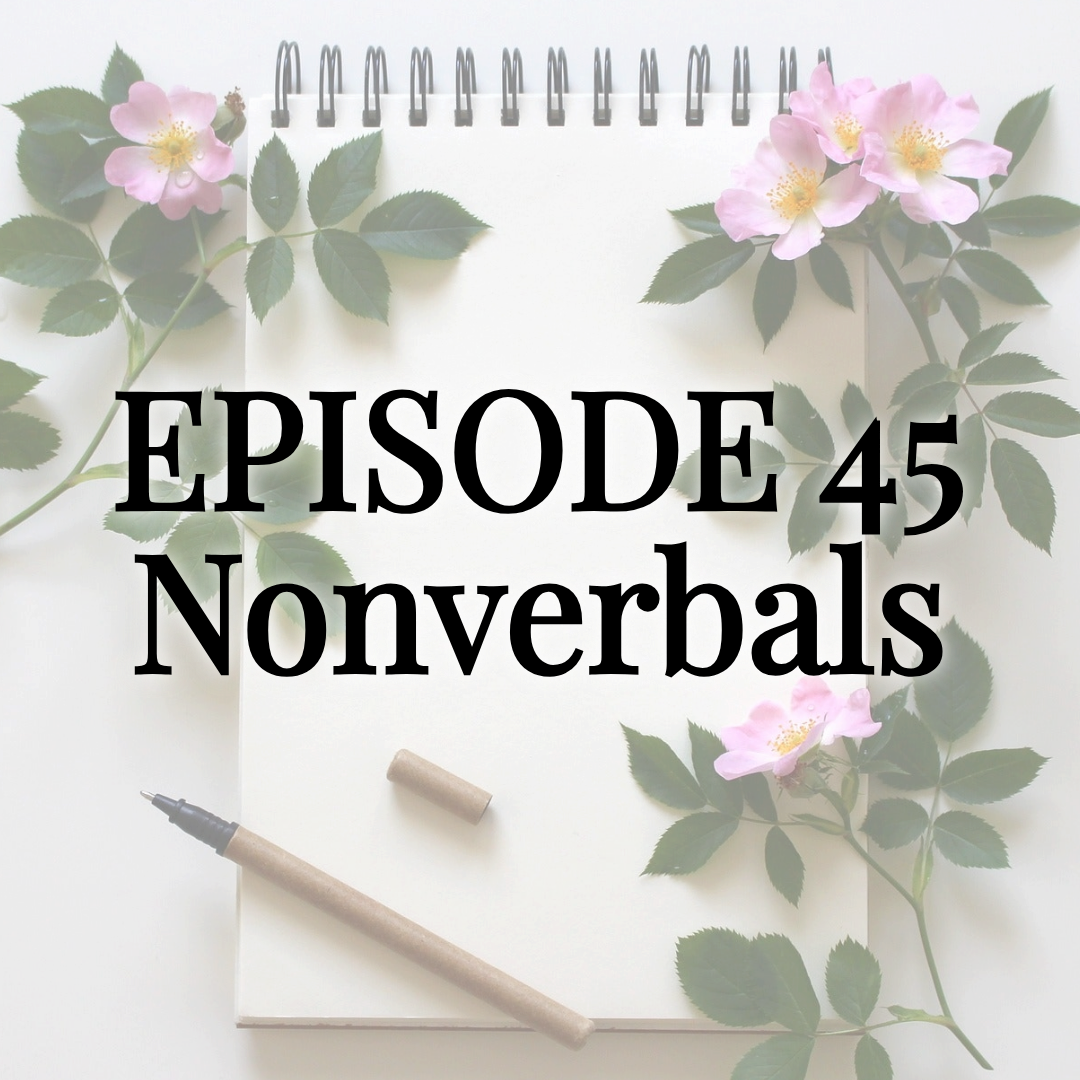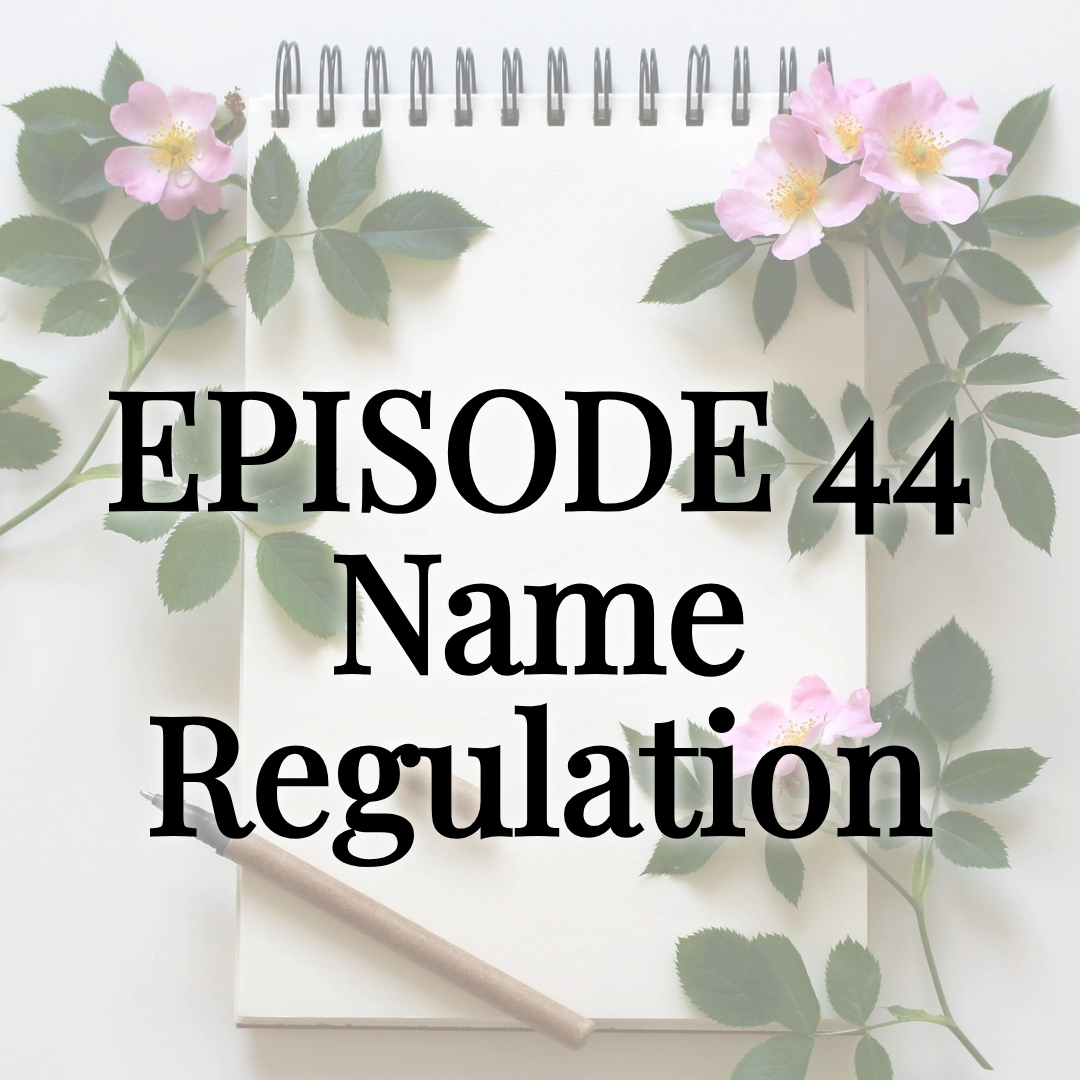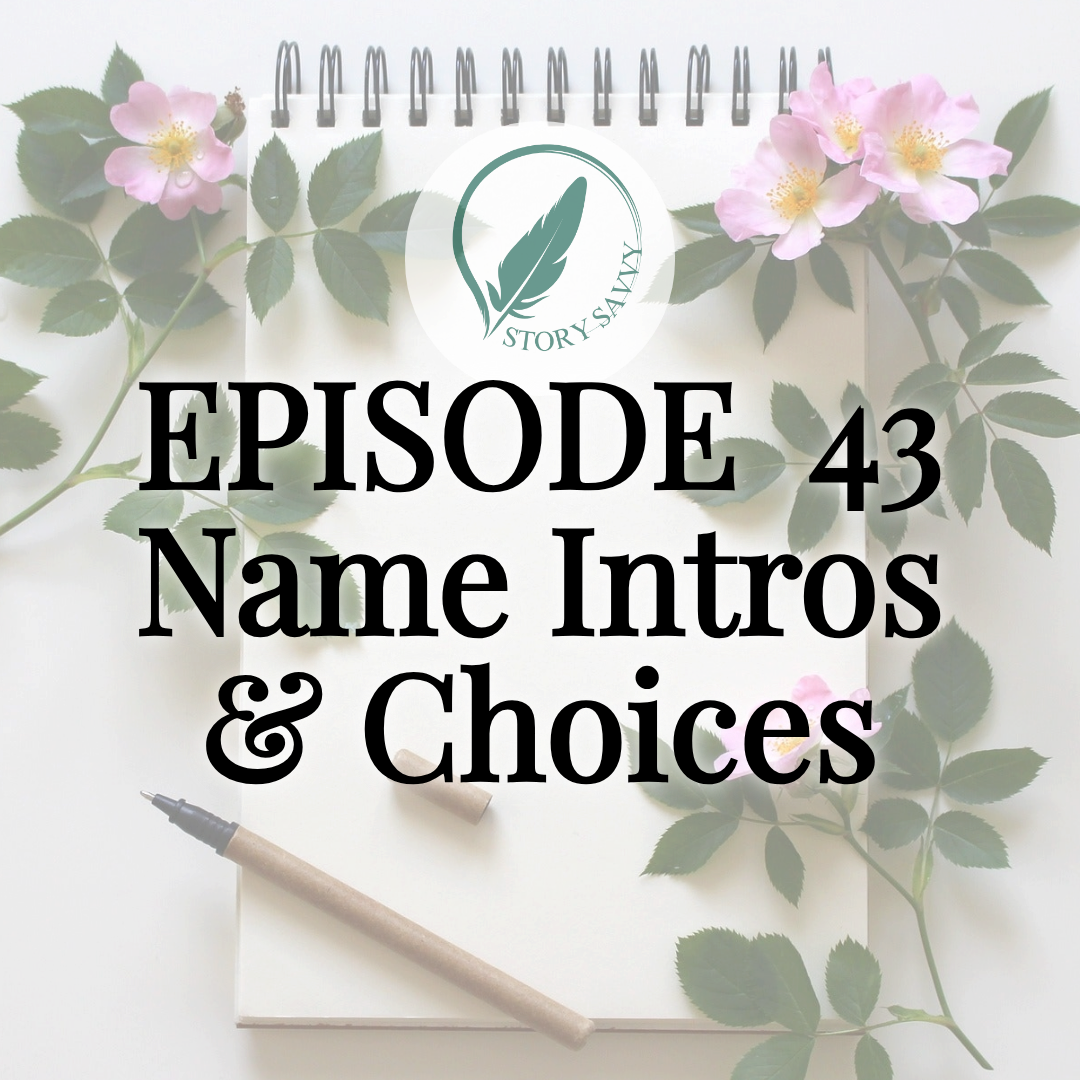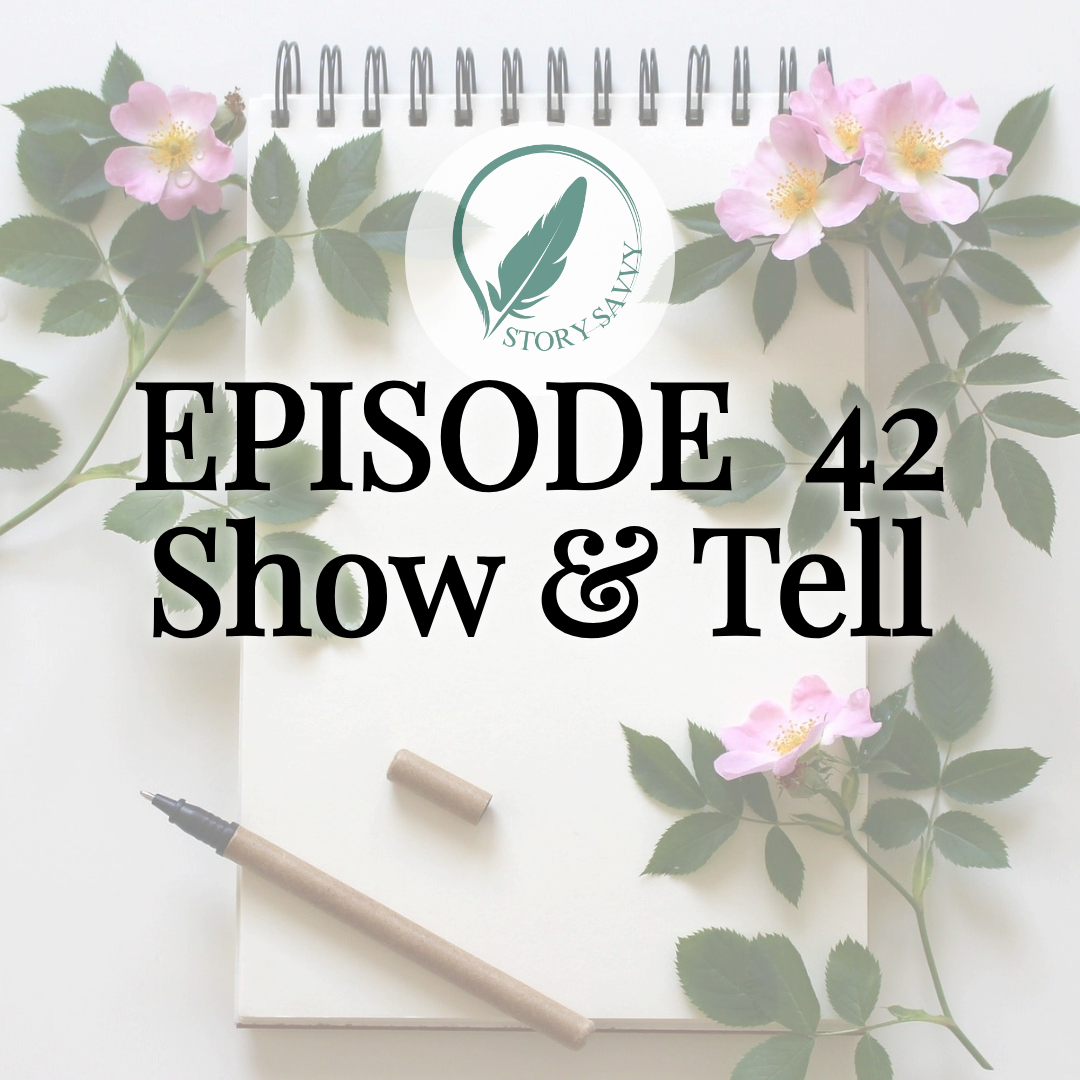Sensory Immersion - Touch, Smell, & Taste: Story Savvy Self-Editing Episode 35
Touch, Smell, & Taste: After-episode thoughts, overview, and transcript…

Didn't think of anything add after recording!
Happy editing!
Episode 35 Overview:
Sensory Immersion - Touch, Smell, & Taste
“Am I using sounds beyond dialogue and visual descriptions to add to my world building, deepen immersion, and add interest to my story?”
Today we discuss how to improve your fiction by writing immersive descriptions, sensory writing techniques, and editing descriptive passages. This episode in our podcast for fantasy writers not only gives show don’t tell writing tips, but covers the last three senses in our two part series on writing with our senses. These will help you to avoid flat scenes, build believable settings, and master self-editing for authors.
Developmental editor Rebecca Hartwell joins fantasy author Agnes Wolfe in the second part of the two part episode set on how to organically and strategically use sensory immersion. They discuss smell, touch, and taste; the three lesser used senses in descriptive writing.
In episode 35 of the Story Savvy Self-Editing series, they unpack:
- How scent can convey emotion, world, or memory
- What “balance” really means in descriptive writing
- Why touch is often most powerful during high emotion
- When to add or cut taste/smell details in revision
- How to link sensory details to character bias
- Mistakes to avoid when describing lesser senses
- Using senses like “smelling salts” to recapture attention
Resources:
Need a Developmental Editor? Check out the 'Services' tab above!
Author’s Alcove Membership: authorsalcove.com
Fantasy Book Giveaway: authorsalcove.org
See you next week for episode 36: Pacing — Big & Small Moments
Episode 35 Transcript:
Sensory Immersion - Touch, Smell, & Taste
Rebecca Hartwell: Hello and welcome to the Hart Bound Editing Podcast. This is episode 35 of the weekly Story Savvy series, where we are tackling the 52 biggest self-editing topics and tips to help you make your good story great as an aspiring author asks me, a developmental editor, all of the questions that you have wanted to. We have covered a bunch in this series so far, including last week's episode on sights and sounds in the context of sensory immersion. Today, we are going to take a look at taste, touch, and smell. By the end of this episode, you will hopefully feel confident checking if you have all five senses in your story and have a solid grasp on how to use them all well. Joining me today to ask all of the questions is my friend and co-host, Agnes Wolfe. Welcome.
Agnes Wolfe: Hi, I'm an aspiring fantasy author who hopes to release her first middle-grade fantasy later next year, and also, host and founder of Author’s Alcove. I am here today to finish up talking about the sensory descriptions in self-editing. So, my very first question is, we went over sight and sound last week, and now we're doing taste, smell and, I'm missing one, touch. Yes. So, why aren't we covering all of them together in one episode?
Rebecca: I touched on this briefly last week. It's essentially that sight and sound are far more important than these other three are, so I wanted to put full emphasis on nailing those as a requirement of self-editing versus these three senses, which are more optional flavoring to play with in self-editing if you feel like there is value in that for you.
Agnes: I definitely agree. I feel like these senses are generally a lot less important to a story than sight and sound, like we talked in our last episode. So, if we do want to use them in our story, by the way, you did beautifully, and I'm going to be talking about that in just a little bit, do we need to use them as much?
Rebecca: No, not even close. These three senses, again, are optional. But smell can help connect your protagonist's memories or reactions to your readers at a deep level. Tastes can add to immersion, and touch can really ground your reader in the protagonist's POV and do a lot to connect your protagonist to their world and other characters. All three of these can deepen your worldbuilding and add interest to your story. The trick is to not go overboard with any of these senses, as overwriting descriptions of these three senses is likely to feel like shoe leather, or purple prose, or fluff, or however you want to describe that. You just need to find the balance of including these three lesser senses, but not over-including a bunch of mentions of them.
Agnes: So what exactly does balance mean in this particular context, if you don't mean equally represented, which is what I'm understanding.
Rebecca: Correct. So, if you want to use them all, there is no minimum requirement to meet. At most, I suggest thinking of them kind of like a Fibonacci sequence. If you want to include as much of them as you reasonably can. Sight gets the most representation. Then, sound. Then touch, then smell, and then taste comes in last. And this is all in descending frequency, or number of words, however you want to measure this representation. However, this is frankly way more thought than any author should be putting into this. So, I suggest just asking yourself a couple of really, really quick questions to help you find and keep this balance kind of on the extreme end of inclusion. First of all, ask yourself which of those goals with sensory immersion that I listed in my answer to your last question that you want to achieve. Are you wanting to invoke memories, immerse the reader, connect the protagonist to the reader, things like that, or connect them to their arena. And then ask yourself, which senses do your protagonist or your POV character emphasize in their experience of their world? And their personality and processing and priorities? With those two answers in mind, make a choice about what scents you want to use to achieve that goal with that filter and just pay attention to that hierarchy of sight, sound, touch, smell, taste, which, you know, most people, most characters and books use in that order in order to avoid overusing those that are lower down the list, or underusing those that are higher up.
Agnes: So, one of the things that I can think of a couple books, actually that when they use scent, specifically scent for each of them, they did such a great job just tying in that you almost it was almost like the scent had its own personality. And one of the books is Heart of Flame by Rebecca Maeve Hartwell. So, I know, like, in your book, smell is tied to a portion of your character's magic, and that reveals characteristics of that person's magic, and I just think you just said in such a beautiful way and it really just helped you enhance your character through that sense and smell. Do you mind me asking you why you chose to build your world in that way? And in answering that I'm hoping you will also answer the question, how can you write smell specifically or touch in a way that enhances your reader's understanding or not, just the world, just the entire world for your characters? Because I feel like you did such a beautiful job, and I think that you can hopefully impart some of that wisdom to us.
Rebecca: Well, first of all, thank you very much for the compliment, I very much appreciate that, but I didn't build my world with that in mind. But in my self-editing, I was looking for a way to use more sensory immersion and, importantly, to differentiate my elemental auras from my color auras, and attaching smells to Angie's aura and temperatures and moisture content to Daniels as a touch sensation worked really well, so I ran with that. When it comes to using smell and touch to help readers understand your world and characters, I have a few pieces of advice, both from my own books and from editing other people's. First, try to use these three senses to show what you would otherwise tell, and to convey subtext, like I mentioned in the last episode. So, for example, smell has the strongest connection to memory, so rather than your protagonist just smelling cinnamon rolls as a mention for the sake of it, make that cause them to then feel and act nostalgically. Or have them react with disgust to the smell of cinnamon rolls to catch the reader's curiosity and attention, and illustrate that perhaps this character is very bitter and just the kind of person who hates what everybody else likes because everybody else likes it, that kind of thing. My second piece of advice is, try to specifically tie smells or physical sensations to specific emotions or big events. For example, in my books, each different scent of Angie's smoke and fire aura directly corresponds to her emotions in that moment. I have a whole spreadsheet for myself of this emotion equals this kind of smoke smell.
Agnes: And you did a really good job portraying that, too.
Rebecca: Thank you. I tried to come up with connections like cedars is protective and Wet Ash is sad, stuff like that. Anyway, the fact that there is that emotional connection is a big part of why the smells are impactful, why you and other people like that. And then, similar to that, with Daniel's use of his cane. So that kinetic, that sense of touch connection is very much connected to and tied into his masked identity in this dark order of the Patricians, which I bring up to the surface and directly address in Book 4. If neither of those aspects were tied as deeply into the emotions and traumas of those characters as they are, they wouldn't be as memorable or impactful to the reader at all. And then my third piece of advice here is, anywhere the reader might be zoning out a little bit in a scene, you can use touch, taste, and smell like smelling salts. You can use a clear but concise sensory moment to pull the reader back down from thinking into experiencing the story, which can really, really help to refocus their attention if things are dragging or meandering a little bit too much.
Agnes: So, I know you touched on this a little earlier, but how can we really tell if we don't have enough of these senses, or actually even too much.
Rebecca: If you are worried about not representing these senses enough. I would suggest finding one single moment of smell, taste, and touch in a full-life novel, and that is it. That is a very low bar for minimum. If you can find one moment of each or find the spot where adding that would be meaningful and impactful, if you want to, do it. But on the other side of that, I think that there is a lot of variation in what can feel like too much. For example, if you are writing about a chef going to culinary school then taste and smell should get a lot of representation, more than in other books, other genres. And if your protagonist is blind, then touch is probably an enormous factor compared to most novels. Outside of those obvious outliers, and if the sort of priority ratio that I was talking about with kind of that Fibonacci sequence visualization for it isn't working for you, then I do generally recommend a couple rules of thumb. First, taste and smell should be mentioned no more than once per chapter or at a stretch if it is very, very relevant, once per page. Touch should only be mentioned once per page, except for sex scenes or other places where it is really, really important to what is happening and what that scene is about. And then I also just really want to mention that I am already thinking of exceptions to these rules, so do not take them as law. Do not take them as writing rules that you need to follow. I just really want writers and listeners to this podcast to think about these aspects and to make their own judgment calls about whether they are overusing or underusing any of these senses, and if they want to, change that in either direction.
Agens: So, I think it's important that you mention that it's more like a guideline than a rule, especially since most of us writers, as we were just recently talking about, are somewhat on the neurodivergent, a wide range of us, I feel like, majority of us are somewhere in the neurodivergent sphere. And we tend to take things as rule, but yes, we’ve got to remember, these are all just guidelines. These are if you want to be the best writer that you can be follow these guidelines, but break them. Sometimes.
Rebecca: And again. Feel it out. If it feels relevant to you, then run with it. If it feels frustrating and irrelevant and you can't do anything with this particular piece of advice, you have my complete and permanent blessing to ignore it.
Agnes: So, for someone like me, who I tend to read for experiential, I might not necessarily remember details or anything like that, but I remember, like, how I felt and that sort of thing. So, when I write, I often think from that and forget to use senses. So, someone like me, what would be some tips or, I don't know, skills that we could help develop. What are some forgotten ways to describe things or give an immersive experience using, you know, smell, taste, touch.
Rebecca: Smells… so, speaking specifically to spots where I think it's often forgotten, or helpful things to bear in mind if you're not sure where to include these senses. Smells are often thought about or experienced acutely when walking through a doorway or, in other moments where a new arena is being entered or explored. Touch is most often relevant in moments of interaction. Be that with another character or objects and the arena. And I suggest just adding texture, descriptors, like rough, or smooth, two existing descriptions, rather than falling into the expositional telling of, “the blank was smooth and warm to so-and-so's touch”. Just say the rock was smooth. I promise that's enough. And then taste doesn't have to be named as sweet, or salty, or fruity, or spicy, or whatever. In order to include taste as a sensory moment just describe a certain food or beverage being consumed. Leave the rest to the reader's memory of the last time they themselves ate that same food.
Agnes: One thing that I was thinking about as you were talking is how they often say that smells is very closely tied to memory and so I think that would be a really good way to really develop a character, is by having a certain smell remind them of something, and that might be a good way of doing that. But speaking specifically about writing characters, we might want to lean on, I think about how we might want to lean on certain senses for certain characters. For instance, Angie, you know, there's certain smells, you know, you chose to use it in that way, but also, just their experience with smells. For instance, if I was writing a character like myself, I might notice my shoes feel uncomfortable. I do not like shoes, by the way. If something bothering me, or the water smells weird, or something like that. Whereas if I was writing about my husband. He can taste something and know exactly what flavors are in this, and he can create that meal because they took a bite of it at a restaurant, and he knows, okay, it has this, this, this, this. I'm like, how do you do that? But that would not be me. So, here's my question. What are some common mistakes people do when trying to build that character in that way, and how can we do that to really enhance it as well?
Rebecca: First of all, I think that is a fantastic point to bring up here. With all sensory description, like I mentioned last week, it can and should absolutely be used to illustrate who the characters are, what they want, everything like that. It can also illustrate what they notice, what they choose to prioritize in their observations and what words they use to process or describe what their senses are picking up on. So, if you want to use this intentionally, in drafting or editing, using these three lesser senses in particular to inform the reader about your characters, then I suggest adding statements about these sensory considerations to your character statements in your series Bible. So, that could be something like you just said, Agnes is most sensitive to touch sensory input from clothing, shoes, wind, etc. And then for a different character, you could put something like, So-and-so has a keen sense of smell and is a picky eater. Things like that. Then, just think about your story, and jot down anywhere you can think of where that is the most relevant, or the most likely to be relevant, and go add in those little details and just a few little words sprinkled here and there. Some common mistakes that I see around this are that all of the characters have the same biases, which obviously speaks to the author just projecting their biases into the whole story. Or a different issue is when none of the characters, or too few of the characters, have any preferences or opinions, or idiosyncrasies around anything sensory-related, and or that things fall into swaths of exposition to cover all of the sensory description the writer wanted to do, in which case I refer you back to episode 31 on avoiding scene stagnation, and the upcoming episode on info dump and exposition.
Agnes: So, can we just pick anything to describe with these senses, or is there, things that we should definitely consider?
Rebecca: Again, think about how it can help establish or maintain a tone. Think about how it could hint at subtext or a subplot, maybe. Think about how it can illustrate an aspect of the character and that sort of things. But, at the end of the day, yes, you can describe whatever you want to, as long as it has some shade of purpose to it. And to be clear, both sensory immersion as its own thing, and trying to keep that dialogue, action, and description balance in good shape on each page as its own thing, are both valid reasons for including a sensory description.
Agnes: I feel like I already know the answer to this based on what you've already shared, but I'm going to ask anyway. Is it worth adding a whole new scene, or moments, or just paragraphs, or whatever, to be able to mention all of these senses? What if food just isn't relevant to your story, or you'd have to deviate from the moving plots to mention taste?
Rebecca: There is no universal guideline here. What you need to ask yourself is how important is including a given sense to you, as an author, just emotionally. Or how important is that sense to your character? For example, if that character mentions being a picky eater out loud to someone else in the story but you never show them eating and feeling feelings about that food that's a bit of a problem. You might want to spend a sentence to plug that hole. The closest that I will come to giving a concrete answer to this is that, no, adding a whole chapter or scene or page to include a sense somewhere is overkill. That is absolutely overkill. Adding a paragraph? Or slightly reworking a scene? Might be reasonable, if it feels important. But adding a sentence or two, or a word or two here and there should be easy and not run much risk of adding exposition, or ending up with descriptive shoe leather.
Agnes: One thing I was thinking about as far as touch, I'm thinking about myself, and I was thinking I was thinking about my characters, how do they feel? And I think also, one of the ways that we could even do touch is, think about how we feel, like when we're agitated, and sometimes, okay, I hate shoes. That's just a weird thing about me. But I don't notice my shoes as often as when I'm irritated, stressed, excited, then all of a sudden, these shoes seem to be way more important in those moments, and I think that we can actually take that, because I don't think that's unique to me. And so just being you know, “the shirt felt really tight”, and that's kind of showing, oh, this person is having strong feelings right now.
Rebecca: I think that's a fantastic point, and I experience a lot of the same. I know when I'm tired and frustrated, my sense of smell becomes much more relevant in my life, and I don't like a lot of what I smell in the world, so you can absolutely use that, and I'm so glad you brought that up.
Agnes: So anyway, we do need to wrap up. I do have one last question, specifically when writing an action scene, I kind of asked this last time, fast-paced scene, and also a slow-er scene as well. How might we use these tools differently depending on the pacing of a particular scene?
Rebecca: I will answer this now looking at all five senses. I think last week I answered just talking about sight and sound. So looking at all senses, and to an extension, all descriptions. I will, I'll take a whack at this. First of all, there are exceptions to every rule.
But my personal experience has largely been that, less description, or at least much shorter and plainer descriptions can help a fast-paced scene whose purpose is momentum, feel even faster, and can make a slower-paced scene feel unfinished or extra boring. On the other side, longer, more involved poetic descriptions, or just more sensory descriptions can really drag down a fast-paced scene. But it can also really help round out a slower scene and lend its function more towards the deep immersion, which is what you want to go with slow paced scenes, so I hope that's helpful.
Agnes: Definitely. Anyway, I just want to thank you so much for all of your insight. It has helped me so much.
Rebecca: You are entirely welcome. Next week we are actually going to revisit pacing, so this is a good segue here. This time we're going to do it at the scene level, including talking about page-level wax and wane in that pacing, and making big moments feel big, and vice versa.
For now, big thank you to everyone who follows along with this series. We would appreciate it if you could help us out by liking and subscribing to the Hart Bound Editing Podcast and the Authors Alcove Podcast, where you can find lots more content for fantasy readers and authors beyond this joint series. Thank you all very much.
Agnes: Can't wait to chat, too, with you then. See you then.
Rebecca: Thank you so much for listening to the Hart Bound Editing Podcast. I look forward to bringing you more content to help you make your good story great so it can change lives and change your world. Follow along to hear more or visit my website, linked in the description, to learn how I can help you and your story to flourish.
See you next time!

